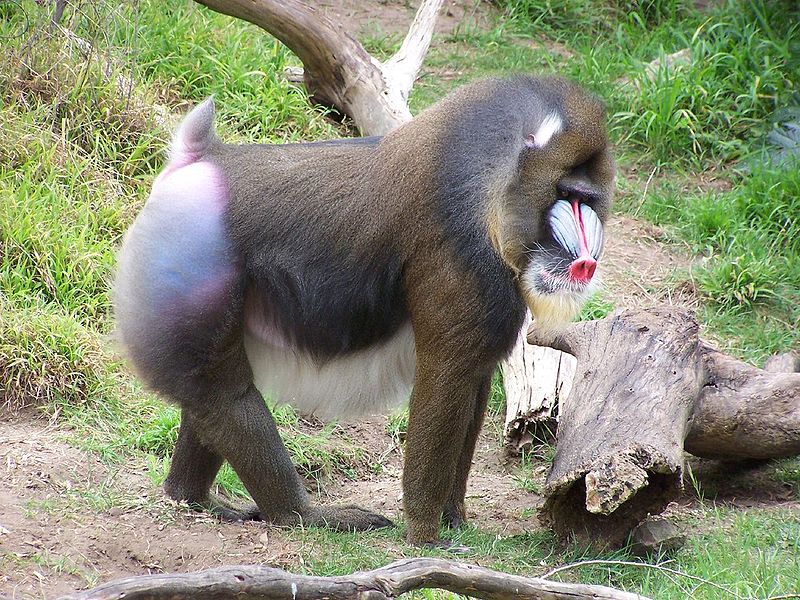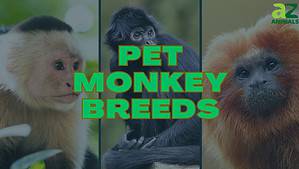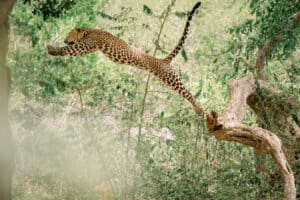Just like humans, monkeys have many different relationships when it comes to mating and reproduction practices. But how do monkeys mate? They can mate monogamously, have a harem, or practice polyandry. Let’s explore the different mating habits of monkeys and what makes each one successful.
Monkey Breeding vs. Natural Reproduction

©Evikka/Shutterstock.com
When it comes to selective reproduction, monkey breeding involves mating monkeys in captivity with the intent to maintain or produce young. When monkeys reproduce without human interference, natural selection determines their offspring’s characteristics. On the other hand, owners may intentionally include specific features in captive-bred monkeys. This method usually improves outcomes for the primate pet trade and increases monetary gains. While monkey breeding may seem straightforward, it involves many different factors. For example, the monkey species, environment, living conditions, and the purpose of the breeding (whether for conservation or research) all play a role.
Two Primary Monkey Reproduction Approaches
In terms of reproduction, there are two main types of monkey breeding: natural mating in captivity and artificial insemination. Natural mating is when two monkeys mate with each other without any human intervention. Artificial insemination, on the other hand, is when monkey sperm is collected and then artificially inserted into the female’s reproductive tract. Breeders or researchers often use this method when there is a specific reason to breed a particular male with a certain female. Reasons include when two monkeys are related but shouldn’t mate with each other. Either way, breeding in captivity is not a natural process for monkeys. Though it is necessary in some cases for preserving a species, it is not nature’s obvious choice.
Are the Reproduction Habits of All Primates the Same?
Monkeys are primates, which means that they share close relations with humans. In fact, scientists consider monkeys the evolutionary ancestors of humans. This close ancestry is why monkeys are such fascinating creatures to study. And there are many types of monkeys, each with unique mating and reproduction habits. For example, some monkeys mate for life while others have multiple partners. In addition, some monkeys live in large groups called troops with many other monkeys, while others live a more solitary life. But, no matter what type of monkey you’re talking about, one thing is sure: monkeys are interesting creatures with complex mating and reproduction habits.
How Do Monkeys Choose Their Mates?

Mandrills have chests with sweat glands that release a scent to attract a mate. But the answer to how often do monkeys mate, depends on whether they’re in captivity or not.
©((brian)) / Creative Commons – Original
Mandrills are native to Africa. They are highly social and live in large troops. However, a recent study of mandrills shows that they prefer to mate with partners who have different genes from their own. This selection is likely due to their offspring being healthier and having a greater chance of survival. Scientists from the University of Durham University undertook research proving this fact and others about how monkeys mate. The Journal of Evolutionary Biology published the results of the study.
Mandrills are known for their brightly colored faces, a combination of red, blue, and purple. The color is potentially part of their mating strategy, as females have proven their preference to mate with males with more intense coloring. In addition, mandrill males have a scent gland on their chest, which males rub vigorously against trees. This behavior is a natural way of advertising their presence to females. The females can then choose a suitable mate based on these smell signals.
Although we cannot answer all questions about how do monkeys mate in every species, they probably share some similarities. For example, choosing mates possibly includes size and other physical trait preferences, with something always drawing one mate to the other. Also, in most species, the female selects the male. So, think bigger, more robust, or the most colorful, and there is a basis for understanding mate selections.
Age of Maturity in Monkeys: When Can Monkeys Reproduce?
Most monkeys reach sexual maturity between the ages of four and eight. However, the age at which a monkey can reproduce depends on the species. Some monkeys mate as early as two years old, while others do not reach sexual maturity until they are ten. The gestation period for most monkeys is about six months.
Monkeys typically live in the wild for 20 to 30 years, though captive monkeys may live much longer. Some species of monkeys live for over 50 years in captivity. The oldest recorded age for a monkey is 54. While monkeys can technically reproduce until they reach the end of their natural lifespan, their probability of mating and frequency declines with age. For example, older monkeys are less likely to find a mate, and even if they do, their offspring are more likely to be born with health problems. Therefore, it is generally accepted that the reproductive years for monkeys end at around 20 to 30 years.
Monogamous Monkeys vs. Polyamorous Monkeys

Titi monkeys are monogamous, with males helping rear young.
Monogamous monkeys are typically found in pairs or small groups, with the male and female sticking together to form a strong bond. This monogamy is common in species like the Titi or Owl monkey. The females will often give birth to just one offspring at a time, and the males will help to care for and protect their young.
Polyamorous monkeys, on the other hand, typically form large groups or ‘harems’ with multiple females and one dominant male. Polyamory is typical in species like the rhesus macaque that lives in Asia. The males in these groups will mate with as many females as possible. Males of polyamorous monkeys are hands-off when it comes to childcare.
So, Which Type of Monkey Is Better Off?
Monogamous monkeys have strong bonds and typically only mate with one partner, leading to fewer offspring. However, polyamorous monkeys have more opportunities to mate and produce offspring, leading to a higher survival rate for their species.
Do Monkeys Flirt and Date?
Do monkeys flirt and date? It turns out they do! According to primatologist graduate student Kelly Finn, monkeys form consortships that involve following each other around, grooming, eating together, and showing aggression to others as a team.
Finn tells all about the interesting flirting behaviors of Rhesus monkeys during mating season at the California National Primate Research Center in a fascinating YouTube video.
These consortships endure from 30 minutes to several weeks and usually involve mating. Some monkeys have many consortships, while others have just a few or none. So next time you see two monkeys hanging out together, they might just be on a date!
Next Up – Monkey Business
We have more amazing blogs on monkeys on our site. So why not read about everything monkey related? Here are a few blogs you might enjoy:
- Can Monkeys Swim?
- Do Monkeys Really Eat Bananas?
- Monkey Feet: Everything You Want To Know
- 10 Types Of Old World Monkeys
The photo featured at the top of this post is © Nick Fox/Shutterstock.com
Thank you for reading! Have some feedback for us? Contact the AZ Animals editorial team.







